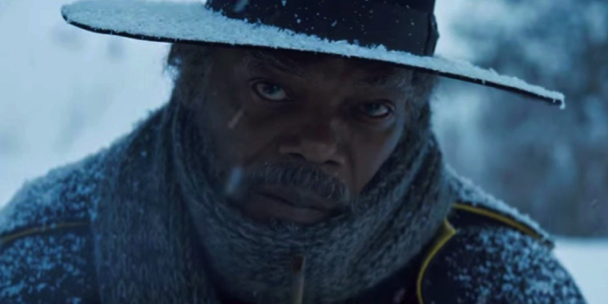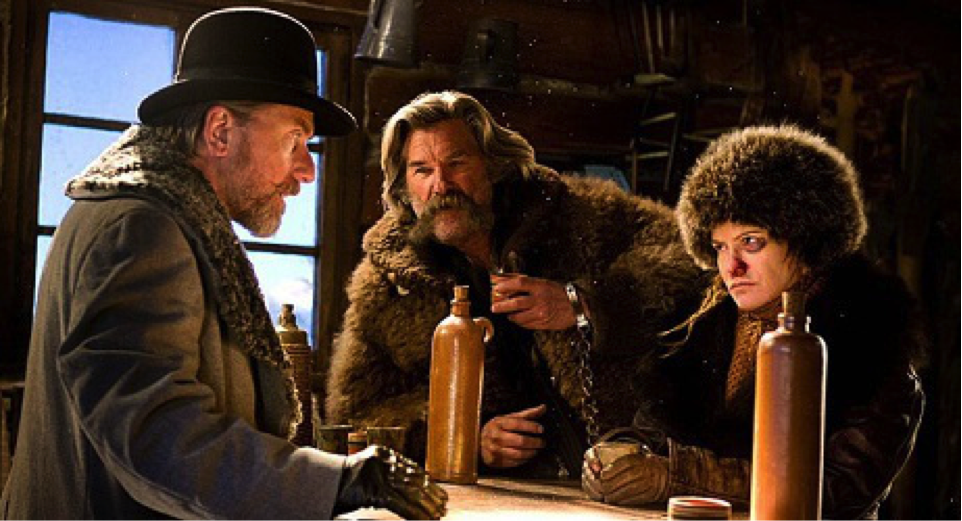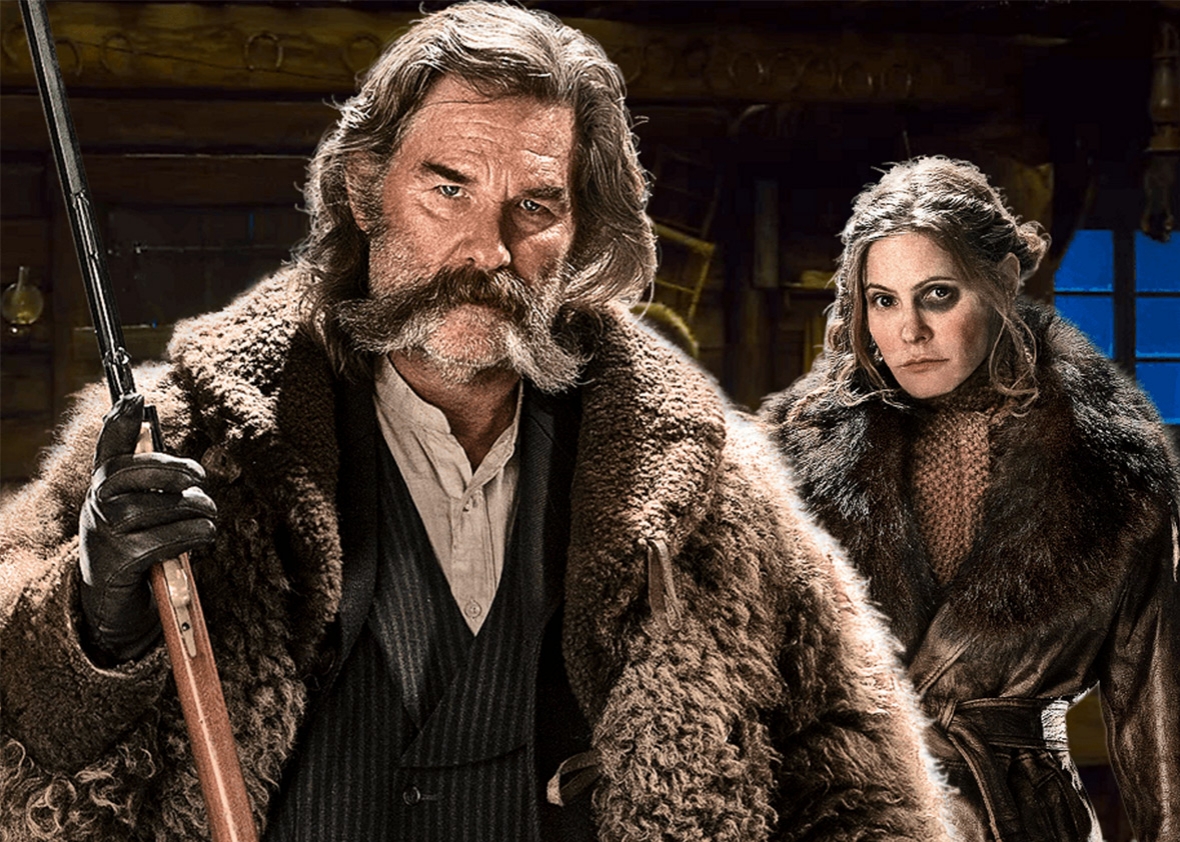By Alex Soderstrom
When it comes to the films of controversial director Quentin Tarantino, audiences always know what they sign up for: action-packed, chaotic storylines that are guaranteed to be outrageous, offensive, and fun. With the director’s eighth film, the intense Western tale “The Hateful Eight,” audiences can no longer be so sure what to expect. This time, a film that is so immensely Tarantino is missing essential characteristics that have defined his films in the past.
The film has picked up three deserving Oscar nominations heading into the 88th Academy Awards, but the Academy no doubt took notice of its shortcomings by declining to nominate “The Hateful Eight” for either Best Picture or Best Original Screenplay. “The Hateful Eight” is ultimately limited by the very aspects that make it worth watching: the directing of Quentin Tarantino.
Although he dabbled in the genre in his “Kill Bill” movies and the 2012 box office hit “Django Unchained,” this is Mr. Tarantino’s first true take on the Western. It opens in impressive style, capturing a carriage ride through the snow-covered Wyoming plains in wide, sweeping shots. This harkens back to the traditional emphasis Western films placed on landscape and shows why Robert Richardson received a Best Cinematography nod. Moreover, it highlights one of Tarantino’s greatest skills: creating an atmosphere. The early shots of the desolate, snowy wilderness are instrumental in constructing the foreboding mood of desperation and isolation felt throughout the film.
Working with the cinematography is a musical score that is nothing short of classic. Ennio Morricone, the composer known for his work in many of Sergio Leone’s Western classics, adds another feather in his cap for the intense soundtrack that earns him his sixth nomination for Best Original Score. The music does more than capture the mood; it defines it. During the movie’s early scenes, Morricone’s score features deep, slow brass pieces. This creates the feeling of intensity and impending doom that surrounds the characters as they attempt to avoid an oncoming blizzard.
The stagecoach is revealed to be carrying notorious bounty hunter John Ruth [Kurt Russell] and his captive, the vile murderess Daisy Domergue, played by the Oscar nominated Jennifer Jason Leigh. Ruth’s wagon soon gains two unplanned passengers in stranded bounty hunter Major Marquis Warren [Samuel L. Jackson] and yet-to-be-deputized sheriff Chris Mannix [Walton Goggins]. All four head straight for a nearby shack in order to gain refuge from an impending blizzard.
Upon arriving, the impromptu wagon party meets an array of characters also seeking shelter. This ensemble puts the director in his element and is the strength of the film. Tarantino has a knack for creating delightful characters with gleeful affinities for violence. This is showcased by the swaggering bounty hunter John Ruth, who brags of his devotion to justice and assuring that his captives always meet their demise at the end of a rope rather than the barrel of a gun. His captive, whom Ruth imagines as less than a woman, is expertly portrayed as such by Jennifer Jason Leigh. Daisy Domergue is an aloof and sinister individual, singing ballads about her captive’s death and grinning through mouthfuls of blood when punched in the face. The chilling performance, which manages to stand out despite so many other dastardly characters, is undoubtedly worthy of Leigh’s Oscar nomination.
As the characters take shelter, distrust almost immediately sets in- as soon as the shack is boarded up against the elements, the mood becomes more trapped than safe. Morricone’s music becomes more frantic, employing high pitched strings that creates a sense of uneasiness. Likewise, Richardson’s cinematography becomes more crisp and focused, narrowing in on the characters. These elements nicely compliment the interactions between those trapped in the shed. Tarantino does a masterful job of playing up tension between the characters to create thrilling clashes of personality and ideals. Marquis Warren, the black bounty hunter whom carries a reputation for burning a Confederate prisoner of war camp to the ground, forms a mutual disdain for the Confederate veteran Chris Mannix. The racial differences create obvious contempt between the cool, collected Warren and the impulsive Mannix. The chemistry between the two is the highlight of a well-acted film and leads one to question Samuel L. Jackson’s exclusion from this year’s Academy Awards.
 Yet, as chilling as the atmosphere is, the director severely limits himself when he shuts the story up inside a one room shack. Many of Tarantino’s films explore a range of settings. For instance, his two prior films, “Inglorious Basterds” and “Django Unchained,” showcase various parts of France and most of the American South, from Texas to Tennessee to Mississippi. In “The Hateful Eight,” the audience is trapped alongside the characters, at times becoming as bored as they are. Movie goers hardly want to be reminded that they actually are stuck inside a single room for almost three hours.
Yet, as chilling as the atmosphere is, the director severely limits himself when he shuts the story up inside a one room shack. Many of Tarantino’s films explore a range of settings. For instance, his two prior films, “Inglorious Basterds” and “Django Unchained,” showcase various parts of France and most of the American South, from Texas to Tennessee to Mississippi. In “The Hateful Eight,” the audience is trapped alongside the characters, at times becoming as bored as they are. Movie goers hardly want to be reminded that they actually are stuck inside a single room for almost three hours.
While Tarantino continues to build the tension, he deprives the audience of his classic violent action scenes, as hardly a shot is fired in the first half of the movie. The characters are just passing time. Tarantino’s characteristic dialogue, which mixes wit, pomp and monotony, wears thin with the absence of the in-your-face action that typically accompanies it.
The conclusion partially returns Tarantino to form, as Warren and Mannix discover that someone in the shack is working with Domergue. The two work together to weed out the culprit, an act that ultimately results in a bloody Mexican standoff between the gang of characters. Unfortunately, it is too little too late. The explosive ending only serves to remind the audience of what the rest of the film is missing.
Quentin Tarantino should be applauded for diverging from his film’s usual formula of sprawling storylines and constant action while still retaining the strong characters and atmospherics that have become his trademark. “The Hateful Eight” presents characters so delightfully sharp-tongued and quick-tempered that they could just as well belong in any of his previous highly-acclaimed films, such as “Pulp Fiction” and “Django Unchained,” yet the restrictive setting does little to compliment this. Where one would expect these characters to engage in a gunfight or bank robbery, they are disappointedly confined to talking. The director conveys powerful atmospherics early on, but the film stalls as the time spent inside the shack wears on. At the end of the day, Mr. Tarantino does not exactly change expectations for his movies; he falls short of them. Though the storyline is less whimsical, “The Hateful Eight” is not a more intense film when compared to Tarantino’s earlier works. Instead, it is not as fun.
There is no use denying the entertainment value of “The Hateful Eight.” The cast give it their all and the cinematography and score present a masterful, classic experience. However, enough mistakes were made by the director to handicap the film’s potential and ensure that he would not be walking the stage at this year’s Academy Awards.
